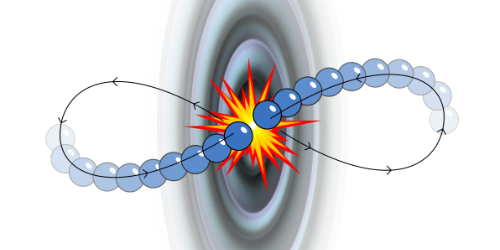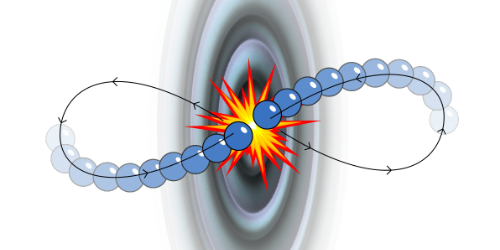Watching Atoms Bang Together
Collisions between atoms are more complex than those between everyday objects, which typically just ricochet off one another. Thanks to the quirks of quantum mechanics, atoms can intertwine and pass through one another, leading to nonintuitive impact outcomes. To better understand atomic collisions, Qingze Guan of the University of Oklahoma in Norman and colleagues developed a way to watch two atoms crash together in 3D. Their initial experiments reveal the unmistakable hallmarks of quantum collisions. The team says that the setup could be used to monitor run-ins between several particles at a time.
The setup developed by Guan and colleagues consists of two perpendicularly oriented laser traps with different strengths. The team confined two ultracold lithium atoms in the stronger trap, keeping the weaker trap on standby. When they switched off the first trap, the other trap caught the atoms, which began to oscillate, colliding with each other at each excursion. By recording the positions of the atoms over time, the team mapped the paths of the atoms, observing a quantum-mechanical interference pattern.
With the aid of a magnetic field, the team tuned how strongly the atoms felt each other’s presence. The interference pattern vanished for noninteracting particles, demonstrating the critical role of interactions in the evolution of the system. The team also calculated that the system never thermalizes; that is, it always “remembers” its starting conditions. Both sets of results agree with predictions.
While these initial experiments were a proof-of-principle, the team says that their successful completion illustrates the possible use of their setup to study more complex atomic interactions.
This research is published in Physical Review Letters.
–Christopher Crockett
Christopher Crockett is a freelance writer based in Arlington, Virginia.





